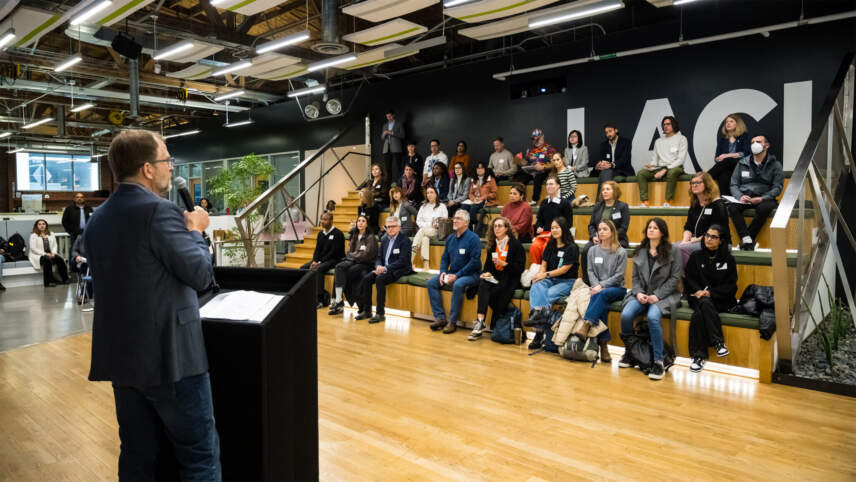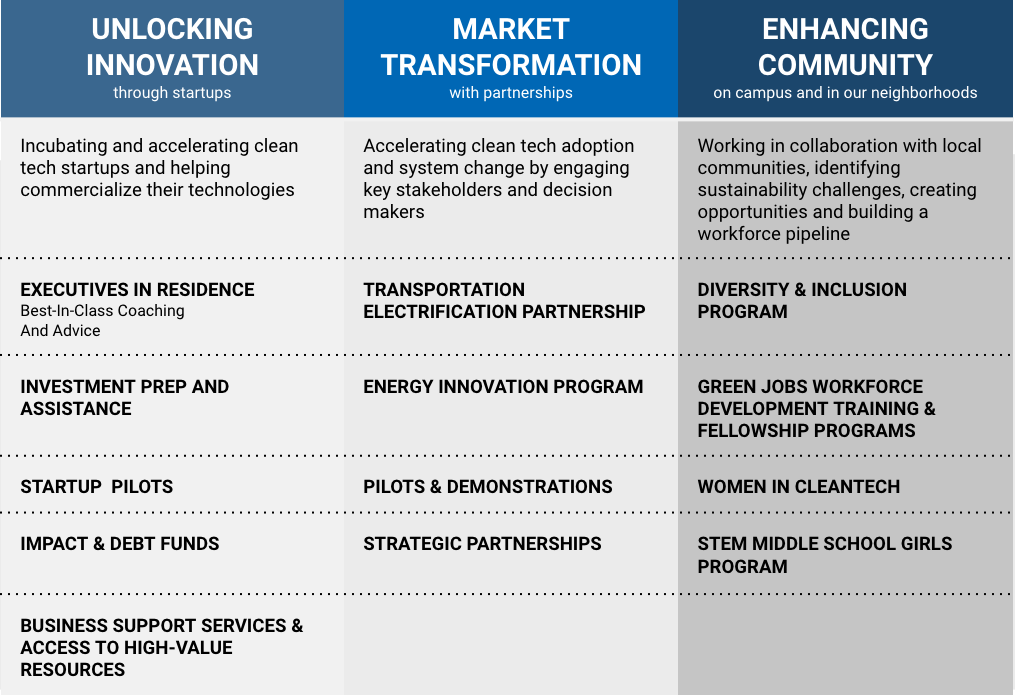
WHY THE CIRCULAR ECONOMY? AN OPPORTUNITY FOR INNOVATION AND KEY SOLUTION FOR SUSTAINABLE CITIES
By Matt Petersen, LACI President and CEO
When we launched LACI’s updated three-pronged holistic, cross-cutting strategy (see below) in 2018 to create an inclusive green economy in Los Angeles and beyond, we set a thesis to focus on transportation electrification, clean energy, and sustainable cities. We quickly saw a surge of EV related and clean energy startups apply and join our incubation program, like ChargerHelp!, Bluedot, Stak Mobility, Evolectric and many others. This was a natural progression given our long-standing partnership with LADWP through our campus and work regionally with Southern California Edison, but was also driven by the launch in 2018 of our unprecedented Transportation Electrification Partnership and the market discovery we did in the run up to the launch of our Clean Energy Partnership in 2023.
In parallel, we took the time to look at what other aspects of creating sustainable cities–and the innovation needed–that we should prioritize. Through our California Energy Commission-funded annual gaps and opportunities report as well as our cleantech market landscape analysis, along with a deep dive with support of a consultant, we identified that circular economy should be our initial focus for our sustainable cities priority area.
Over the last couple years, we started to see nearly ⅓ or more of the startups that apply being a circular economy company like Dyrt, Rewilder, Olokun Minerals and others. Soon we will launch our first circular economy-focused workforce training program, building on our similar training programs inspired by our transportation electrification and clean energy partnerships and related startup needs.
As part of our discovery process, we engaged with experts and given the concentration of fashion and textile related businesses in LA along with the overall municipal waste stream, we saw a need to focus on textile waste. In deeper discussions with City of LA officials, our eyes widened as we saw not just old clothes–exploding in volume due to fast fashion unfortunately–but waste from cut and sew operations and unsold inventories that were all going to the landfill, or worse.
That’s why LACI is shaping a new textile recycling pilot in Los Angeles. Working alongside LA Sanitation and Environment (LASAN), we are bringing together a diverse group of industry leaders, local government officials, and small business founders to reimagine the possibilities of textile recycling.
Starting in the early 1990’s when I chaired the green team committee–a committee of one it turns out–for Habitat for Humanity LA’s Jimmy Carter Work Project in Watts/Willowbrook scheduled for 1995, I have looked at how to reduce waste, to reuse materials, and recycle whatever possible. Later, I helped convene and lead a multi-stakeholder coalition of businesses and environmentalists allied around beverage container recycling that produced what was known as the BEAR report. That worked continued when I got to City Hall in 2013, and set about to create LA’s first comprehensive sustainable city plan–in the pLAn as we called it, we included not only a waste diversion target to get to zero waste, but a remanufacturing target to take materials and put them back to use.
From these experiences and many others, I have come to recognize the need for strong, coordinated partnerships that bring together the key voices necessary to drive progress on the issues that matter most in our communities while ensuring we protect our most vulnerable by prioritizing equity and environmental justice.
Fortunately, many businesses in the textile industry today are eager to incorporate more recycled materials into their products, but the volume of textile waste currently generated in the region significantly exceeds the amount that businesses can process under current conditions without proper infrastructure, and gainful supply chain models. Without these comprehensive systems to keep discarded textiles from ending up in the landfill, textile waste will continue to increase. This is where LACI, LASAN, and stakeholders of a burgeoning textile recycling pilot are crafting solutions.
LACI and LASAN hosted a charrette on February 1st at the La Kretz Innovation Campus to begin laying the groundwork for a Sustainable Cities Partnership on the circular economy. The room swelled with energy and enthusiasm as key stakeholders envisioned a resurgence in LA’s massive manufacturing operations with an expanded focus on recycling and upcycling discarded textiles.
We were proud to co-host the event with Barbara Romero, director and general manager of LASAN, and Susana Reyes, commissioner at the LA Board of Public Works, to help frame a vision to the stakeholders in the room. Together, we discussed the contours of a pilot that will test business models to repurpose, reuse, and recycle textile waste.
I am particularly excited about the ambitious plans to establish a multi-resource textile recycling pilot in the heart of Los Angeles. While the details of the pilot are still being designed, the proposed pilot with the City of LA would hold the capacity to recycle at least 1000 pounds of commercial textile waste daily. In addition to saving used-yet-usable textiles from the landfill, a textile recycling hub could lead to opportunities for entrepreneurs and the workforce. An undertaking of this scale would require innovation from startups as well as trained employees to facilitate collection and material identification. Emerging technologies to identify fibers could speed up the process of textile sorting, thereby diverting more materials from the landfill to the recycling hub and eventually to manufacturing facilities to be made into new products.
After establishing the textile recycling pilot, LACI, LASAN and partners will seek to continue scaling through a materials marketplace pilot model capable of diverting over 250,000 tons of pre-consumer textile waste from landfills per year by 2028. This achievement, if realized, could serve as a template for cities around the world to replicate, and the model will be on full display when the world arrives in Los Angeles for the 2028 Olympic and Paralympic Games.
The bold plan that partners outlined during the recent charrette marks the first major step in a series of necessary milestones to establish Los Angeles as the sustainable manufacturing hub of the western hemisphere. And if the momentum generated by these initial discussions are any indication of the possibilities that lie ahead, then the prospect of a more sustainable, economically prosperous future is indeed very bright.

###